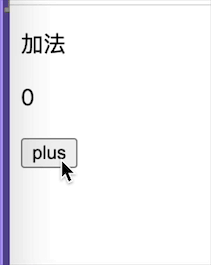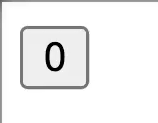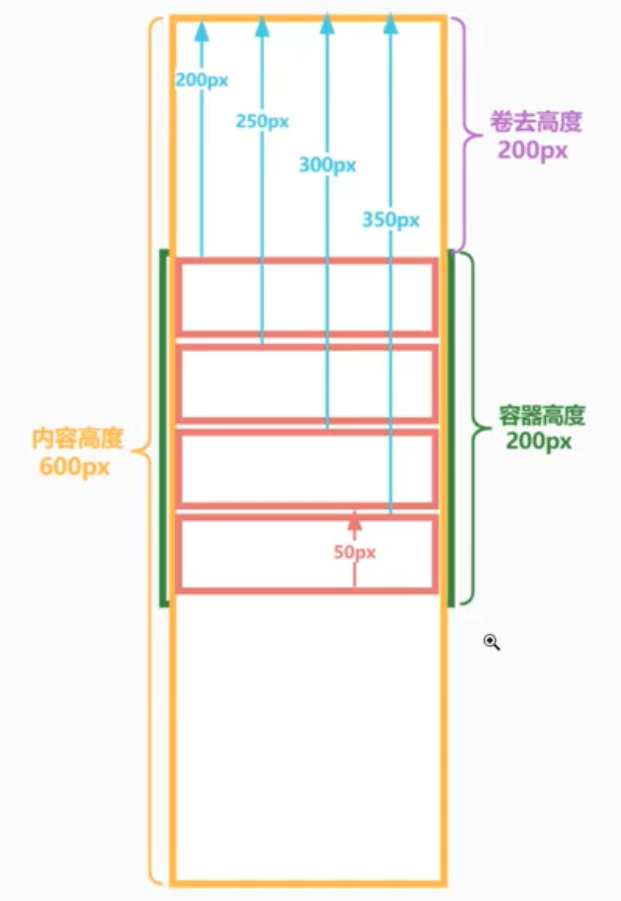项目地址:https://github.com/Nealyang/R...
本想等项目做完再连载一波系列博客,随着开发的进行,也是的确遇到了不少坑,请教了不少人。遂想,何不一边记录踩坑,一边分享收获呢。分享当然是好的,
如果能做到集思广益,那岂不是更美。我们的口号是:坚决不会烂尾
本博客为连载代码博客同步更新博客,随着项目往后开发可能会遇到前面写的不合适的地方会再回头修改。如有不妥~欢迎兄弟们不啬赐教。谢谢!
react-redux 配置说明
reducer
首先我们在项目/app/reducers下新建一个index.js,用于导出所有的reducer。
也用于将admin、front等reducer汇总的文件。最后combineReducers后直接导出。
export default combineReducers({
front,globalState: reducer,admin
})
上面admin,reducer,front是别的文件中的reducer处理。这里我们可以暂时导出一个空的state。
对应的每一个子reducer书写大致如下:
export const actionTypes = {
ADMIN_URI_LOCATION:"ADMIN_URI_LOCATION"
};
const initialState = {
url:"/"
};
export const actions = {
change_location_admin:function (url) {
return{
type:actionTypes.ADMIN_URI_LOCATION,data:url
}
}
};
export function reducer(state=initialState,action) {
switch (action.type){
case actionTypes.ADMIN_URI_LOCATION:
return {
...state,url:action.data
};
default:
return state
}
}
const admin = combineReducers({
adminGlobalState:reducer,users,tags
});
export default admin
定义initialState(这个state节点上的initialState,不总的state),actions,actionTypes以及reducer。然后倒入reducer。
在index中引入后,即为state中的admin节点。
configureStore
配置store的文件。这个文件的功能正如其名,就是配置store的。其中我们主要做了如下工作。
- applyMiddleware->将一些中间件、reducer、装在进去
- 区分环境,判断是否需要加入开发工具。如:devToolsExtension
- 配合热更新
- createStore
代码如下:
const win = window;
const sagaMiddleware = createSagaMiddleware();
const middlewares = [];
let storeEnhancers ;
if(process.env.NODE_ENV==='production'){
storeEnhancers = compose(
applyMiddleware(...middlewares,sagaMiddleware)
);
}else{
storeEnhancers = compose(
applyMiddleware(...middlewares,sagaMiddleware),(win && win.devToolsExtension) ? win.devToolsExtension() : (f) => f,);
}
export default function configureStore(initialState={}) {
const store = createStore(rootReducer,initialState,storeEnhancers);
sagaMiddleware.run(rootSaga);
if (module.hot && process.env.NODE_ENV!=='production') {
// Enable Webpack hot module replacement for reducers
module.hot.accept( './reducers',() => {
const nextRootReducer = require('./reducers/index');
store.replaceReducer(nextRootReducer);
});
}
return store;
}
最后倒入store,用于在App中使用。
react-router 配置说明
react-router中的配置主要在/container/index.js文件中。该文件负责导出所有路由中的文件。
说一下该项目的路由大致规则。默认情况下,输入域名(我们这里是localhost),直接进入首页。也就是我们项目中的front部分。
/ -> 首页 (虽然说首页,但是仔细看页面结构,其实就是文章列表页) /:tag -> 其他文章列表页 /detail/:id -> 详情页 /admin -> 后台管理首页 /admin/xxx -> 后台管理页的某一个模块 比如:/admin/managerTags -> 标签管理页面 /404 -> notFound
所以根据路由配置先具体后模糊的规则。并且这里牵涉到路由嵌套,所以必定抽离出组件来:
index.js render部分如下:
render() {
let {isFetching} = this.props;
return (
<Router>
<div>
<Switch>
<Route path='/404' component={NotFound}/>
<Route path='/admin' component={Admin}/>
<Route component={Front}/>
</Switch>
{isFetching && <Loading/>}
{this.props.notification && this.props.notification.content ?
(this.props.notification.type === 1 ?
this.openNotification('success',this.props.notification.content) :
this.openNotification('error',this.props.notification.content)) :
null}
</div>
</Router>
)
}
因为路由模糊的部分只要front部分是最模糊的,所以我们把它匹配到最下面。别的大家应该都没有疑惑,至于isFetch notification后面会介绍。
至于为什么要在这里放这些isFetch和notification。因为这是所有路由的最外面一层,是front和admin界面下公共的部分。Loading加载图标,全局提示信息都可以公用。
所以我们放在最外层。
一定记住。能公用的一组东西,我们一定是放到路由匹配的最外层。
下面看下Font和admin的代码
const Front = ({match}) => {
return (
<div>
<div className={`${animationStyle.animated} ${animationStyle.fadeInDown}`}>
<Banner/>
<Menus/>
</div>
<Switch>
<Route exact path={match.url} component={Home}/>
<Route path={`/detail/:id`} component={Detail}/>
<Route path={`/:tag`} component={Home}/>
<Route component={NotFound}/>
</Switch>
</div>
)
};
admin:
render() {
const {url} = this.props.match;
if(this.props.userInfo.userType){
return (
<div>
{
this.props.userInfo.userType === 'admin' ?
<div className={style.container}>
<div className={style.menuContainer}>
<AdminMenu history={this.props.history}
url={this.props.adminUrl}
changeUrl={this.props.change_location_admin}/>
</div>
<div className={style.contentContainer}>
<Switch>
<Route exact path={url} component={AdminIndex}/>
<Route path={`${url}/managerUser`} component={AdminManagerUser}/>
<Route path={`${url}/managerTags`} component={AdminManagerTags}/>
<Route path={`${url}/newArticle`} component={AdminNewArticle}/>
<Route path={`${url}/detail`} component={Detail}/>
<Route component={NotFound}/>
</Switch>
</div>
</div> :
<Redirect to='/'/>
}
</div>
)
}else{
return <NotFound/>
}
}
注意admin中的路由匹配,这里必须要使用{match},否则你点击link你会发现路由跳转成功了,但是对应页面没有渲染。
关于admin中为什么判断this.props.userInfo后续权限判断哪里会说到。以及会说这里遇到的一些问题(重点)。这里我们还是只关注路由部分。再次强调,必须使用match
来取url。然后根据自己后台管理的定义项,随着开发,往后面去填充对应的路由即可。
结束语
至此,这个项目的redux,router基本就配置完成了。后续随着开发,回往/app/reducers中在添加对应的reducer。以及在路由中添加新建的页面。
如果您有更好想法,欢迎您联系我。我们一起改进~
如果有什么不明白的地方,欢迎提issue。我会第一时间处理。
项目实现步骤系列博客
- [x] 实战react技术栈+express前后端博客项目(0)-- 预热一波
- [x] 实战react技术栈+express前后端博客项目(1)-- 整体项目结构搭建、state状态树设计
- [x] 实战react技术栈+express前后端博客项目(2)-- 前端react-xxx、路由配置
- 实战react技术栈+express前后端博客项目(3)-- 后端路由、代理以及静态资源托管等其他配置说明
- 实战react技术栈+express前后端博客项目(4)-- 博客首页代码编写以及redux-saga组织
- 实战react技术栈+express前后端博客项目(5)-- 前后端实现登录功能
- 实战react技术栈+express前后端博客项目(6)-- 使用session实现免登陆+管理后台权限验证
- 实战react技术栈+express前后端博客项目(7)-- 前端管理界面用户查看功能+后端对应接口开发
- 实战react技术栈+express前后端博客项目(8)-- 前端管理界面标签管理功能+后端对应接口开发
- 实战react技术栈+express前后端博客项目(9)-- 前端管理界面标签管理功能+后端对应接口开发
- 实战react技术栈+express前后端博客项目(10)-- 前端管理界面发表文章功能
- 实战react技术栈+express前后端博客项目(11)-- 后端接口对应文章部分的增删改查
- 实战react技术栈+express前后端博客项目(12)-- 前端对于发文部分的完善(增删改查、分页等)
- 实战react技术栈+express前后端博客项目(13)-- 前端对于发文部分的完善(增删改查等)
- 实战react技术栈+express前后端博客项目(14)-- 内容详情页以及阅读数的展示
- 实战react技术栈+express前后端博客项目(15)-- 博客添加评论功能以及对应后端实现
- 实战react技术栈+express前后端博客项目(16)-- pm2 的使用说明
- 实战react技术栈+express前后端博客项目(17)-- 收工
交流
倘若有哪里说的不是很明白,或者有什么需要与我交流,欢迎各位提issue。或者加群联系我~
扫码关注我的个人微信公众号,直接回复,必有回应。分享更多原创文章。点击交流学习加我微信、qq群。一起学习,一起进步
欢迎兄弟们加入:
Node.js技术交流群:209530601
React技术栈:398240621
前端技术杂谈:604953717 (新建)

 react 中的高阶组件主要是对于 hooks 之前的类组件来说的,如...
react 中的高阶组件主要是对于 hooks 之前的类组件来说的,如... 我们上一节了解了组件的更新机制,但是只是停留在表层上,例...
我们上一节了解了组件的更新机制,但是只是停留在表层上,例... 我们上一节了解了 react 的虚拟 dom 的格式,如何把虚拟 dom...
我们上一节了解了 react 的虚拟 dom 的格式,如何把虚拟 dom... react 本身提供了克隆组件的方法,但是平时开发中可能很少使...
react 本身提供了克隆组件的方法,但是平时开发中可能很少使... mobx 是一个简单可扩展的状态管理库,中文官网链接。小编在接...
mobx 是一个简单可扩展的状态管理库,中文官网链接。小编在接... 我们在平常的开发中不可避免的会有很多列表渲染逻辑,在 pc ...
我们在平常的开发中不可避免的会有很多列表渲染逻辑,在 pc ...